Is it legal to cut down a tree on SLO property? You have to follow these rules, city says
From California sycamores to coast live oaks, trees are part of a leafy legacy in San Luis Obispo.
The city’s commitment to its urban forest has been recognized by the Arbor Day Foundation’s Tree City USA program for 40 years.
“The city places a high value on trees and the benefits they provide for our urban and economic environment,” including shade, cooling and air quality, said Walter Gault, San Luis Obispo Urban Forestry Program coordinator and city arborist. “The code is written so they can be protected or preserved.”
What should you do if you want to cut down a tree on private property?
Reddit user dr_beez_e recently asked, “My next-door neighbor has a dead tree that is clearly a hazard to either me or their tenants. I’ve told them about it multiple times and nothing gets done about it. My question is, where can I report this?”
Here’s what city law says about dealing with unwanted trees.
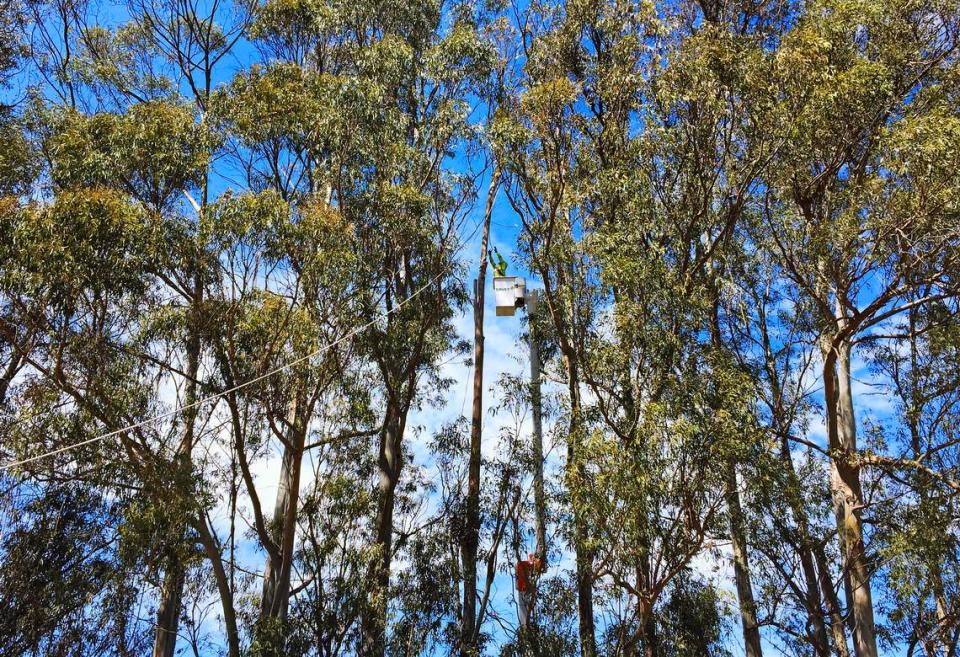
Do I need permission to cut down a tree in SLO?
“No person shall cut down, remove or destroy any tree, or cause the cutting down, removal or destruction of any tree” on private property, city law says, without first obtaining a tree removal permit.
The city arborist typically issues a permit under these circumstances, according to the city website:
The tree is an “imminent hazard to life or property.”
The tree is dead, dying, diseased or damaged beyond reclamation.
The tree’s roots are causing “severe damage to public or private property.”
The tree is affected by structural defects that will limit its lifespan.
The tree is “densely clustered” among other trees.
The tree is obstructing “vision, access or mobility of public traffic.”
Removing the tree would alleviate a “maintenance burden” for the property owner.
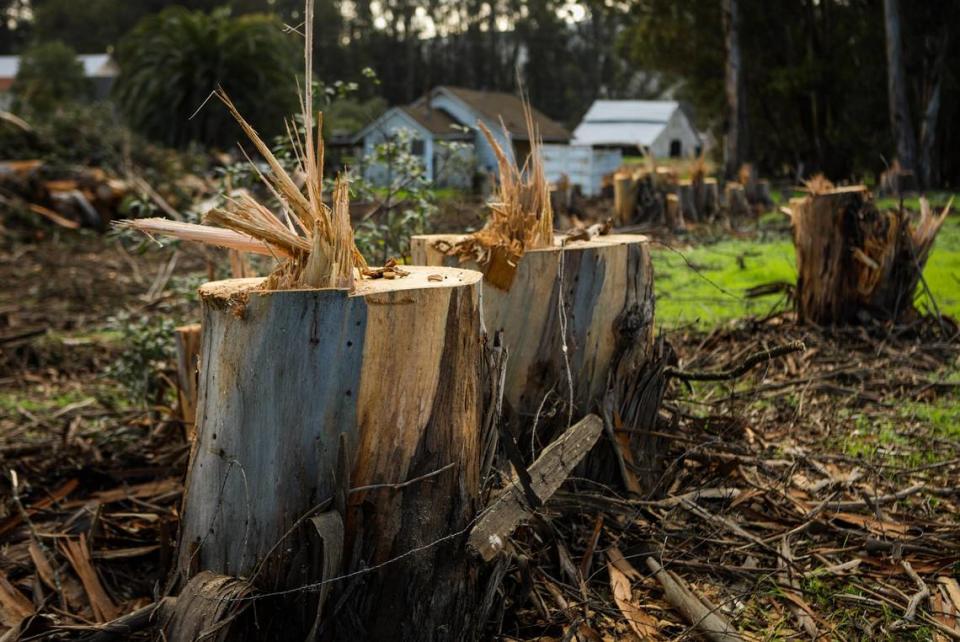
According to city code, people living in low- and medium-density residential area don’t need a permit to cut down or remove a tree if:
It’s a native tree with a trunk less than 10 inches in diameter.
It’s a nonnative tree with a trunk less than 20 inches in diameter.
It’s a palm with a trunk less than 12 inches in diameter.
The tree is not located within a creek setback area.
The tree is not a designated street tree, and not located within 10 feet of the back of a sidewalk.
You’re not required to plant or keep the tree as a condition of development.
Native trees include big leaf maples, box elders and willows, the city said.
If you live outside of city limits, you may need to get a tree removal permit from the San Luis Obispo County Department of Planning & Building. Rules on tree removal differ depending on whether you live inland or in a coastal area.
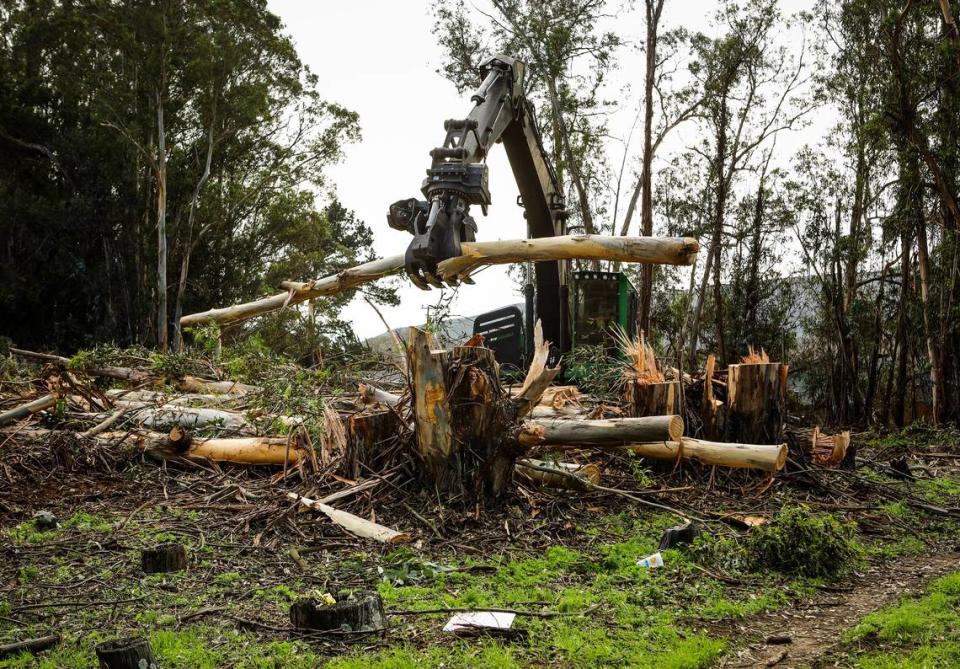
What about construction?
The city arborist has the authority to approve or deny requests to remove trees to build single-family homes or accessory dwelling units in low- and medium-density residential areas, or improve access for disabled residents.
The same goes for most developments, said Gault, the city arborist.
In the case of particularly large building projects or large amounts of trees, he said, the San Luis Obispo Community Development Department may choose to “elevate the decision” to the city’s Tree Committee, which makes recommendations to the San Luis Obispo City Council and staff on tree policies and regulations.
“Generally things pass through me,” Gault said. “If I make a decision about tree health and hazard, the decision can be appealed through the Tree Committee.”
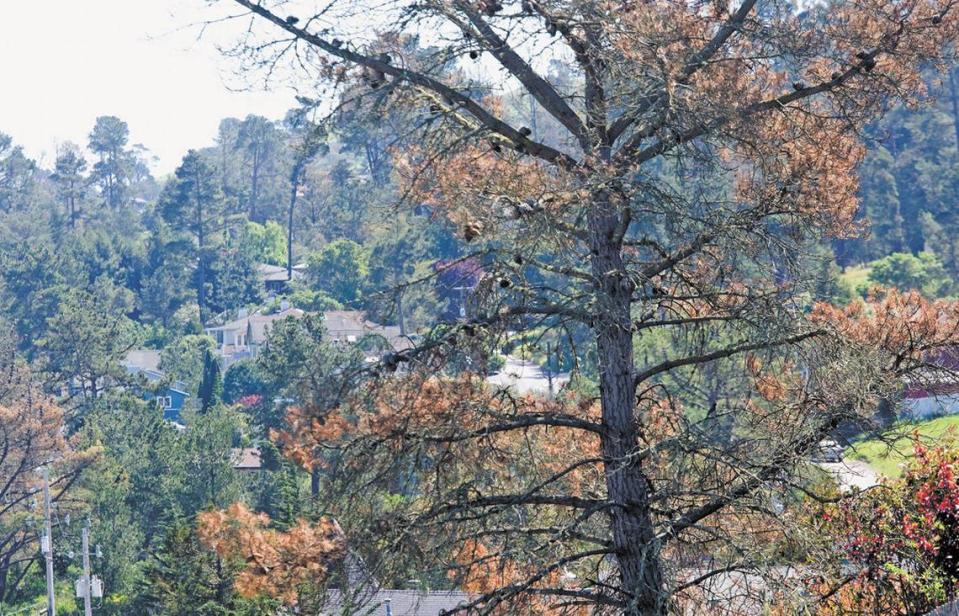
How much does it cost to apply for a tree removal permit?
As of July 2023, it cost $182.37 to apply for tree removal and $140.80 to appeal a tree removal decision, according to the city.
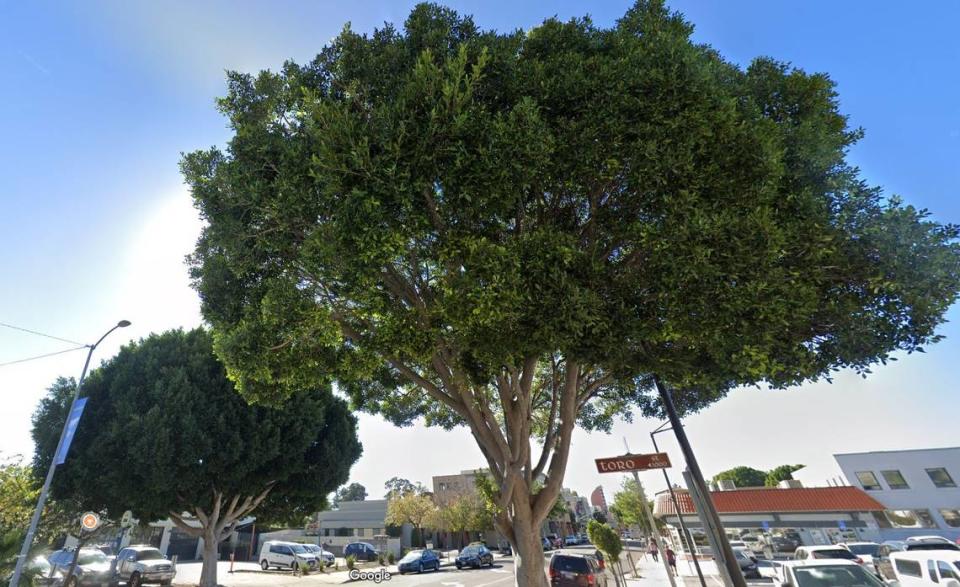
Can I make my neighbor remove a tree on private property?
“If it’s a private tree on private property and not impacting a public right of way, it’s a civil issue neighbors have to work it out themselves,” Gault said.
One possible exception might involve a dead tree that’s fallen across a creek, he said, since the city manages waterways.
“Generally these things are civil matters unless it can be shown it impacts public safety,” he explained.
While California’s code of civil procedure prohibits you from cutting down trees owned by your neighbor, you are allowed to cut tree limbs or roots that encroach on your property, The Sacramento Bee reported previously.
You can trim up to the property line, but not over it, California code says, and you have to stay on your side to conduct the work.
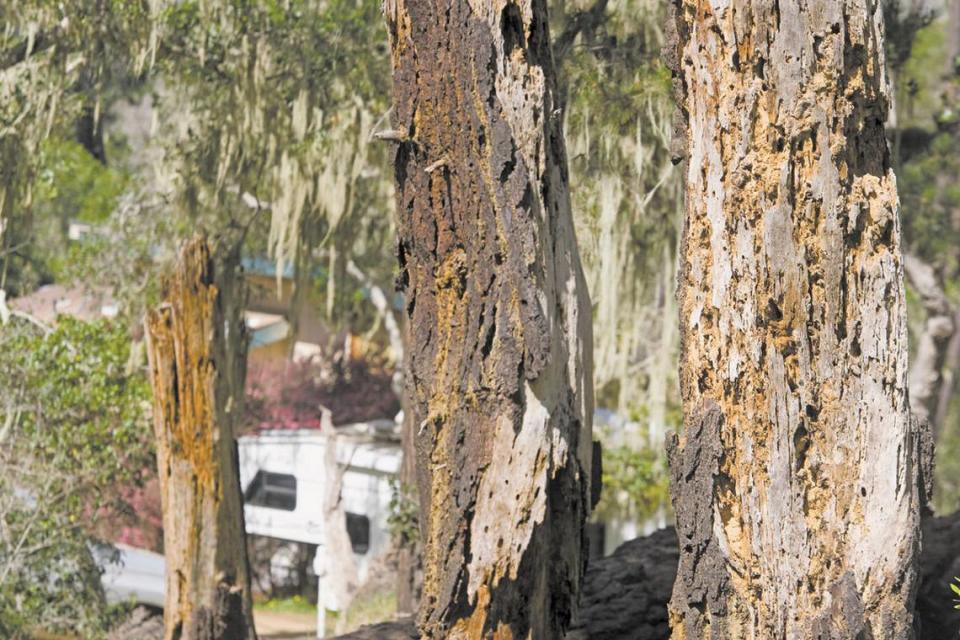
How can I report a nuisance tree?
You can report potential code violations via Ask SLO, the city’s “centralized resident engagement platform.”
These include “trees, weeds or other types of vegetation that are dead, decayed, infested, diseased, overgrown or harbor rats or vermin and are visible from a public right-of-way,” the city said.
To report an issue or request a public service, log into slocity.org/ask or download the app on your smartphone or tablet.
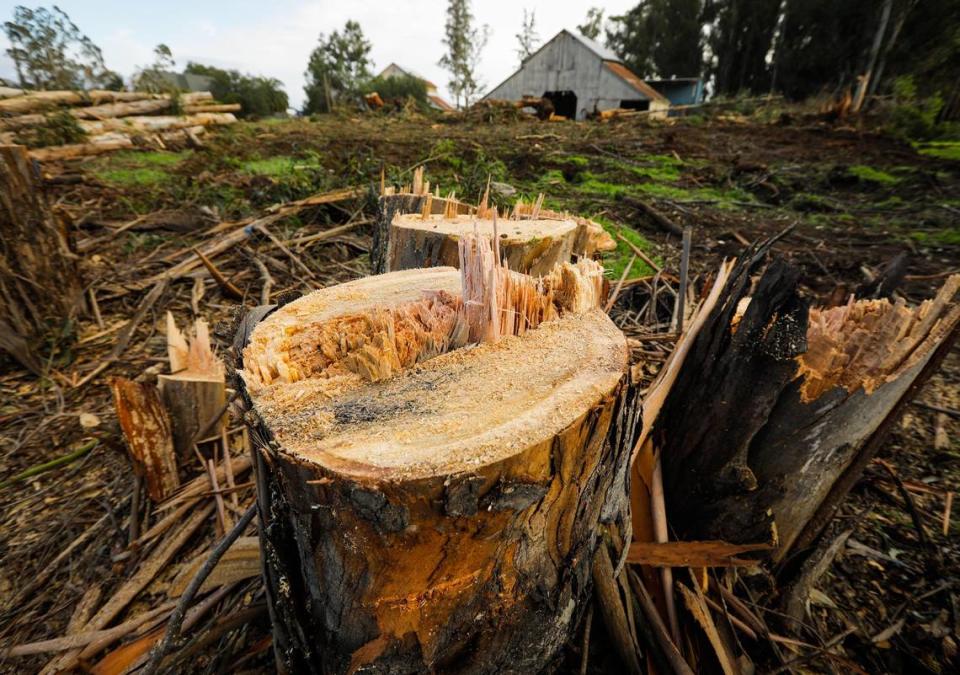
Can you get in trouble for damaging a tree?
Damaging a tree or removing a tree without a permit can result in civil penalties, according to the city of San Luis Obispo.
Those penalties amount to double the value of the tree, plus “all staff costs related to the illegal tree removal or tree damage,” the city said.
If the tree removal or damage is related to a development or subdivision, you have to pay four times the tree’s value, plus related staff costs.
The city arborist calculates the tree’s value based on factors such as its species, trunk diameter and condition, Gault said, using methods established by the International Society of Arboriculture.
Trees can be valued in the thousands of dollars, he said.
In addition to civil penalties, the property owner must plant “up to three trees under the direction of the city arborist,” who determines the size of those replacement trees, the city said.
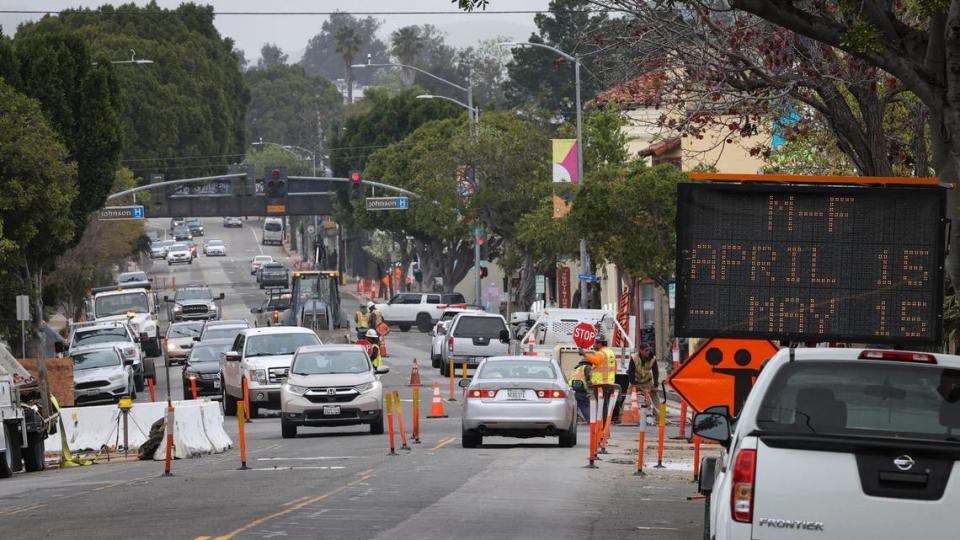
What are the rules for removing trees on city property?
The city of San Luis Obispo cares for and manages more than 20,000 trees on public property within city limits, the city said on its website. These include trees along streets and in parks.
In 2021, San Luis Obispo announced a plan to plant an additional 10,000 trees by 2035, funded with hotel tax revenues.
The city uses an urban forestry crew and a contractor to “service and assess” street trees approximately every five years, Gault wrote in an email.
“Sometimes a tree poses a hazard and warrants removal,” he said.
“A struggling tree could represent an opportunity to replace with a better species,” he said, such as one better suited to the site’s microclimate or slope position.
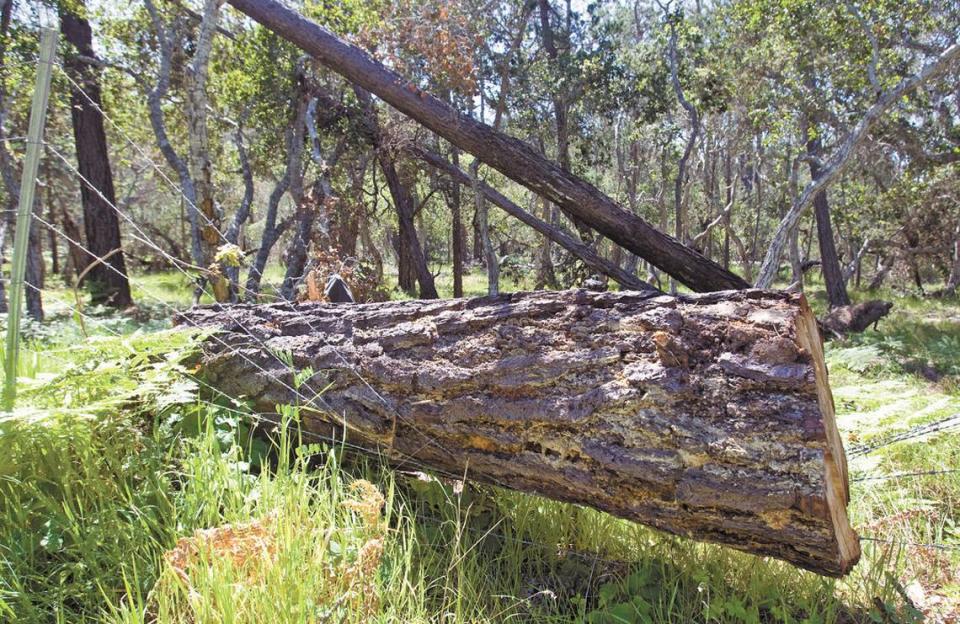
More tree removal resources in SLO
For questions about street trees, call the urban forestry team at 805-781-7023.
To learn more about tree removal on private property, call 805-781-7170 or visit the Community Development Department online.

